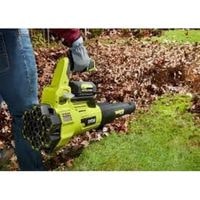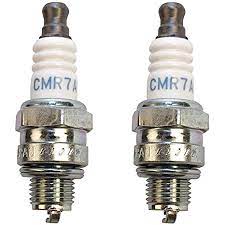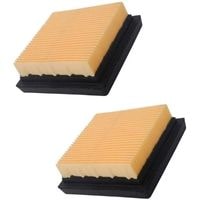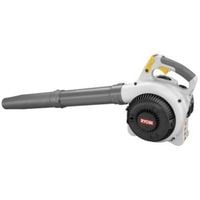Ryobi Leaf blower won’t start. Gas-powered leaf blowers, like that found in the Ryobi series of products, are generally easier to start than other kinds.
While other kinds may require a more thorough troubleshooting and repair approach, these are little workhorses for generating power through small gas engines.
There are really only a few key areas to look out for when using these devices over extended periods of time namely the carburetor, spark plug, ignition coil, and the engine itself.
To avoid issues caused by the aforementioned parts trying to take over from you as an operator of this tool,
it’s worth taking care of them with some routine maintenance before storing your leaf blower for long durations. Doing so will reduce unnecessary wear and tear on the internal workings of a Ryobi gas-powered leaf blower.
Ryobi Leaf blower won’t start

If the carburetor is clogged, try cleaning it with carburetor cleaner. If that doesn’t work, rebuild or replace it entirely.
The carburetor might be clogged. A clogged carburetor is usually caused by leaving fuel in the leaf blower for a long period of time.
The carburetor is clogged
It is possible that the carburetor is clogged. Carburetor clogs are commonly caused by storing the leaf blower for an extended period of time, fuel evaporates over time and leaves behind a sticky residue.
The sticky substance can block the hole in the carburetor and stop the engine from starting up because it needs to suck fuel into the engine for it to work.
One remedy for this problem can be to use a cleaner that will help remove this gunk in order to unblock it.
If cleaning the carburetor doesn’t resolve the issue, you may want to consider replacing or rebuilding it if still under warranty.
A spark plug is defective

Check the spark plug for signs of wear or damage. Replace the spark plug if the porcelain insulator is cracked,
an electrode is burned away, damaged, or if there is a substantial buildup of carbon at the electrode.
Use a spark plug tester that can be connected to your car’s battery with alligator clips to find out whether your engine has any misfires.
To determine if your spark plugs are bad, use a wire that you can ground and then touch the probe to the part of the map where the wires connect (it has a metal plate over it).
You should see a strong spark when grounded. If there is no spark, this indicates that you would need to replace your current spark plugs with new ones.
Clogged Fuel Filter
There may be a clog in the fuel filter. Leaving old gasoline in a leaf blower for a long time is the most common cause of a clogged fuel filter.
Over time, some of the ingredients in the fuel may evaporate, leaving behind a thicker, stickier substance. This sticky fuel can clog up the fuel filter and prevent the engine from starting.
If old gasoline was left in the leaf blower, drain the old gasoline from the tank and replace the filter.
Faulty Air Filter

If your air filter was to become plugged with dirt and dust, it will block the flow of air into the engine, which could cause your blower to seize up which in turn would prevent fuel from being able to be burned.
This usually happens from overuse instead of underuse because most people who don’t clean their filters regularly are more likely to end up driving their leaf blower more normally rather than letting them sit idle for days in a row.
The best way to avoid this issue is by making sure you clean your air filter every few months; if it becomes too dirty or clogged to clean, you should just replace it with a new one.
Spark arrestor clogged
The spark arrestor is a small screen that prevents the engine from emitting sparks. Over time, the spark arrestor can become clogged with soot.
If this happens you’ll find that it’s difficult to start your engine again. To unclog the spark arrestor, remove it from its housing and clean it thoroughly with a wire brush or if needed replace the part entirely.
Rewind springs may be broken
When starting up your leaf blowers, the ropes should recoil onto a pulley. If there’s no recoil, or if it’s not functioning as expected, remove any blade installed and then check to see that the rope is winding back into a sealed compartment.
Also, make sure that your starter rope isn’t too tight during operation it only takes 5 pounds of force to start the leaf blower’s engine but if it’s wound too tightly.
Then normal user operation will break the plastic housing around the starter rope assembly. Take your defective model under warranty and have them repair or replace it with a new one.
Ignition coils issue
The ignition coil sends voltage to the spark plug when the engine is on. If the ignition coil breaks, the engine won’t start without it. Before replacing it, test the spark plug to confirm whether or not it’s still working.
If both of these items are working properly, then test out your ignition coil with an ignition coil tester. Assuming that the ignition coil is having problems, replace it otherwise, keep things as they are now.
The coil starter assembly does not work
On a leaf blower, the recoil starter engages the fan to turn over the engine. If the recoil starter is defective, it may prevent you from starting your leaf blower.
To inspect the starter, remove it and look for broken or damaged parts. The tabs that engage with the crank should move freely and retract when released.
When pulling the rope, you should feel resistance until it catches on a gear after which you can then pull rapidly without feeling any resistance. If this is not working correctly, replace it with a new one.
Related Guide

